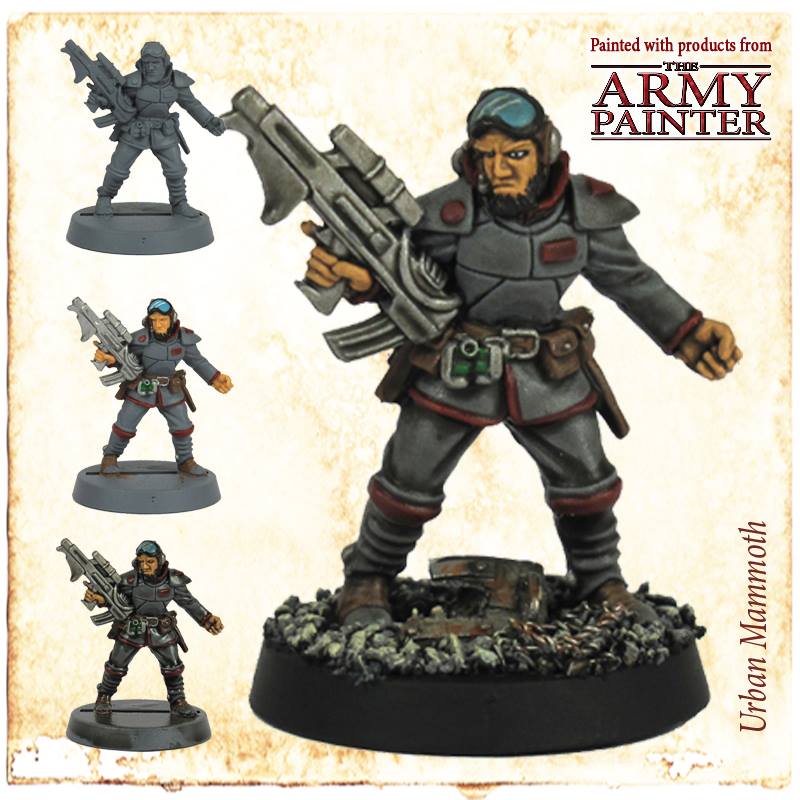
miniatures and should not be confused with the many dodgy floor varnishes or shoe polishes… This product has been specifically designed and engineered to work with 10-28mm. Painting armies of miniatures to fantastic results has never been easier – especially if you combine this high quality product with the revolutionary Colour Primers. The famous and ground-breaking Quickshade is a pigmented varnish which will shade your miniatures perfectly and still let the colours come through. In the picture below, you can see the paint brush I use and some of those torn up, rolled up paper towel pieces.The Army Painter Quickshade Warpaint – Soft Tone – 250ml Watch for joints, on weapon blades, and in places like the eye sockets, mouth, and ears.

I use this to absorb some of the puddles of the Quick Shade that form. If you miss a spot, it will be obvious when it starts to dry.Īfter I paint it on, I then have little rolls of torn up paper towel. You have to make sure you paint everywhere on the model. That way, when you flip it back for drying, gravity will help put the goo where you want it. You want to paint on the Quick Shade while the miniature is held upside down. This stuff will ruin the brush so make sure it's a paint brush you don't care about. The ogres are a little bigger so I use the "paint on" method. I put that clip assembly into my drill, attach it to the miniature's base, submerge it upside down, and spin the mini around in a cardboard box to get off the excess goo. I have a small alligator clip that I attached to a section of an old paintbrush. On smaller models, I just use a drill and spin the miniature after dipping it. There's a couple different ways to apply the Quick Shade. I'm more interested in a strong, consistent flesh tone. I'm not very careful in where the paint goes at this stage. I use multiple thin coats of Tallarn Flesh by GW. In this case, I just used the GW Black Primer. If you're a painter like me or even if you're just curious what the Quick Shade or "dip" method can do, read on. If I get 90-95% of the mold lines off I'm happy. I'm constantly distracted and I'm one of those people who paints out of the paint pot instead of using a palette (more specifically painting out of the lid after dropping in a drop or two of water to thin it out). I've painted some miniatures I'm proud of in the past, but I don't have the patience to do anything more than tabletop quality in large quantities. I'll also preface this by saving I am not a "good" painter. I'm trying to use him as a Maneater (even though he's not really customized to any extent). The other closed-fist hand is just a normal hand with the sword carved off. The miniature that I'm using is just an Ogre Bull with a handgun from one of the cavalry sprues. I hope the pictures are good enough so that people who are interested can tell what I'm doing.

This is going to be a lot of pictures, so I apologize in advance if you're bandwidth starved. I'm not trying to push their product or anything, but I thought I would give a demo of what kind of results I got.

In doing so, I decided I'd try to use some of the Army Painter Quick Shade that I bought. Most of the stuff I got was primered or unpainted so I thought I would sit down and try to quickly paint up a force that I wouldn't mind setting up on the table. I had recently traded some stuff on Bartertown (for a relatively large Ogre Kingdoms army for Warhammer Fantasy. You want to bring good looking minis to the table, but you know that time is at a premium. Before anyone starts to think this blog is only about Warmachine & Hordes, I thought I would bring back a panting guide I wrote up a little more than a year ago.Īlmost anyone who likes playing miniatures games knows how frustrating it can be finding time to paint.


 0 kommentar(er)
0 kommentar(er)
